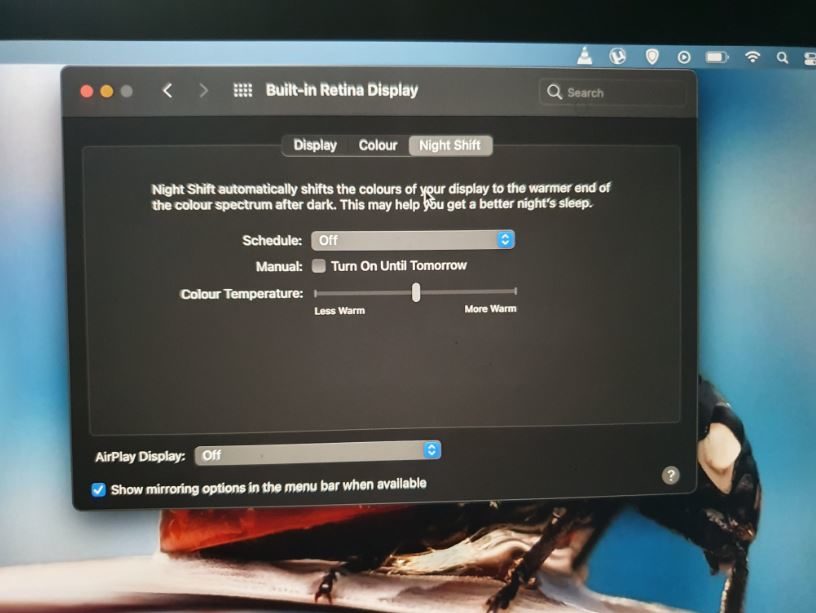
While everyone reacts to it differently, there’s a chance it might just help out with things like eye strain. Color Temperature setup for Night Shift is global.
/001-enable-night-shift-on-mac-4137316-19be640c13eb42ffa36a840dfd054383.jpg)
Although, you can’t have display-specific settings for it. It just won’t work if you’re attaching it with a television or a projector. We tested it in both mirroring mode and external display mode. Yes, Night Shift does work with connected monitors. The warmer you go, the more pronounced the orange tint will be. This is where you’ll be able to tone down or turn up the warmth.
TURN ON NIGHT SHIFT MAC MANUAL
If you want manual control over the timing, choose on Custom from the Schedule drop-down and you can set your own time range.Īt the bottom, you’ll find the slider for Color Temperature. Meaning, it will automatically turn on around sunset time for where you are. This is where you’ll find all the options for interacting with the feature.įrom the Schedule section, you can put Night Shift on a Sunset to Sunrise cycle.

If you’re running one of the Macs listed below, or higher, you’re good to go. Night Shift simulates this effect by putting an orange tint all over your Mac’s display. It’s possible that looking at warmer colors before bed, or at night time, can help reduce the damage. On the opposite side of the spectrum is warmer, yellow/orangish light. If you work late nights, that damage can materialize in different ways – stress, lack of sleep. Looking at a strong blue light at night can be harmful to your eyes. Night Shift is like a night mode for your Mac. Recommended: iOS 10.3 Features and Updates: What’s New What Does Night Shift Do? Is it going to be useful on your Mac? How do you start using it? Read on to find out.

The feature we first saw in iOS 9.3 has finally made its way to the Mac. One of the biggest features in macOS Sierra 10.12.4 is the inclusion of Night Shift.


 0 kommentar(er)
0 kommentar(er)
